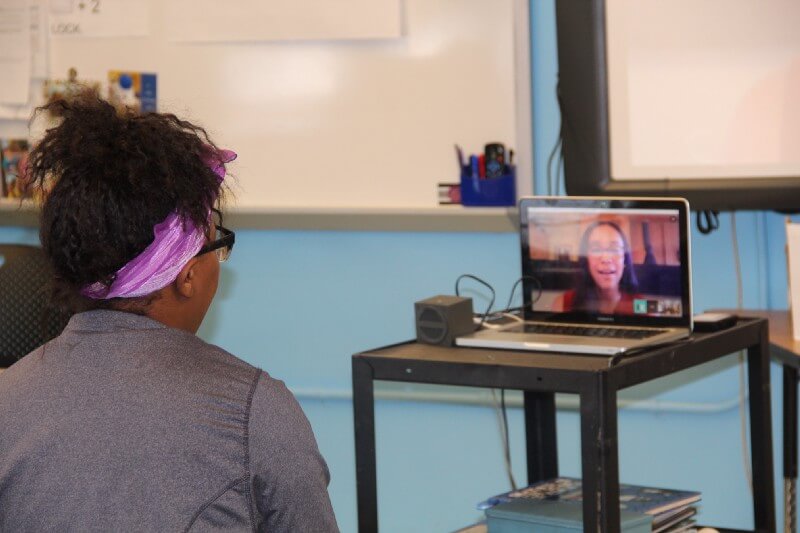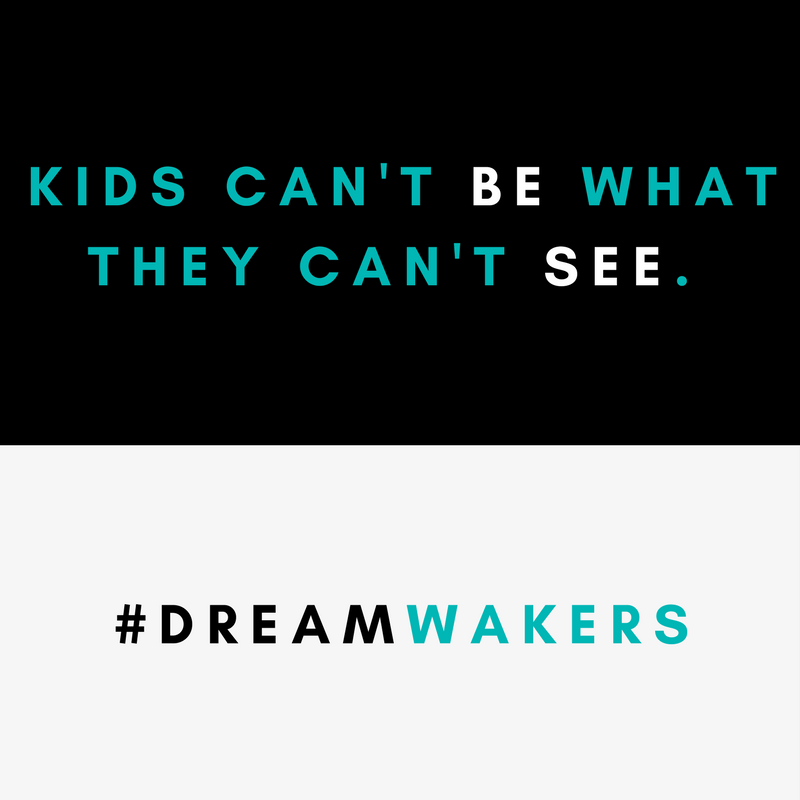
One in four Americans believe humans are more likely to colonize Mars in their lifetime than for half of Fortune 500 CEOs to be women. With this in mind, it’s hard to dispute the idea that Women’s History Month is a good time to take to heart the campaign theme of this year’s celebrations and #PressforProgress. For those of us in the education community, that means creating lesson plans that #PressforProgress on behalf of our future female leaders, boldly taking on teaching topics about women’s equality and empowerment.
One way to do this is by inviting female guest speakers into the classroom to talk about their careers. But recruiting strong, inspiring women leaders to step away from their busy schedules to speak to students can be pretty difficult. And that is only one side of the equation. We all know that teachers face immense obstacles in carving out time from rigid and necessary schedules for such extracurricular visits, no matter whom they are with.

That’s where DreamWakers comes in. Simply put, we’re a national education technology nonprofit that believes kids can’t be what they can’t see. So we set up the technology to make it happen. Female entrepreneurs and business leaders don’t need to leave the office to participate in these video chats, and the DreamWakers team alleviates much of the behind-the-scenes work for teachers as we take the lead on finding, vetting, and matching the right speaker with the right classroom. What’s more, we record each session and post clips on YouTube for teachers to use in their lesson plans, allowing them to introduce diverse new role models to young scholars with the click of a button.
This Women’s History Month, we are excited to celebrate all of the unique contributions, accomplishments, and moments of inspiration created by our female DreamWakers speakers over the past few years. Watch this short video to be inspired by a few of these female career role models, such as Vote.org CEO and Founder Debra Cleaver, CNN reporter Ahiza Garcia, L’Oreal Color Lab manager Balanda Atis, Designer Lee Chan, and journalist Soledad O’Brien.
Leveraging DreamWakers’ Women’s History Month videos and activities (below) is a simple yet powerful way for teachers to spark classroom dialogues about issues such as the portrayal of women in the media, workforce equality, and how women in different professional fields #PressforProgress. By exposing students to strong and successful female role models from diverse career backgrounds — including scientists, doctors, politicians, artists, musicians, journalists, and more — teachers can help students, regardless of gender, see what they one day might be.

#PressforProgress — Women’s History Month Lesson Plans
Provide students with a bit of background.
· “Who knows the significance of the month of March? It’s Women’s History Month, a time to celebrate the many types of achievements of women. I’d like for us to keep this in mind as we think about our own achievements, and learn about bold women of today and of the past.”
Assign homework.
· Research a woman — alive or from history — who took risks to press for progress despite a bad situation. In a paragraph, describe her story. Who was she? What risks did she take? What was the outcome?
· Do you consider yourself someone who advocates for others? Have you ever taken a bold step to make a change in your community, school, or home life to make it better for someone else? In three to five sentences describe your experience and the results you achieved.
Introduce the International Women’s Day in-class activity.
· “In honor of Women’s History Month — we get to watch YouTube videos! We will watch and reflect upon a few of DreamWakers’ YouTube clips. What is DreamWakers? They are an organization that brings real-world experts into classrooms like ours over video chats, like Google Hangouts. They record parts of the sessions and post them on YouTube. So these are the clips we’ll be watching today.”
Depending on your classroom situation and tech availability, ask students to watch 3–5 videos on the DreamWakers’ Women’s History Month YouTube playlist. Then, in small groups or in a whole class discussion, ask the below questions.
· What do you think was the key takeaway of the speaker’s story?
· What about the speaker’s story surprised you?
· Were you inspired by what the speaker shared? Why or why not?
· If you had the opportunity, what question would you ask the speaker?
· Could you see yourself taking the advice that the speaker gave? Why or why not?
· What are three adjectives you would use to describe the speaker. Are these qualities you would like to emulate? Why or why not?
· Describe what (if any) stereotypes about women you see on TV or social media.
· How do these stereotypes compare to the real-life speakers we watched in these clips?
Assign a research project.
· Identify a woman from history who has changed the world.
· Write a short paragraph describing the cause she worked on, her method of bringing progress to that issue and describe the outcome. Include your opinion of the importance of the progress she made.
· Use these resources from the Learning Network at the New York Times for examples of three women who pressed for progress. Be prepared to share about one woman’s actions in a three-minute presentation in class tomorrow.


